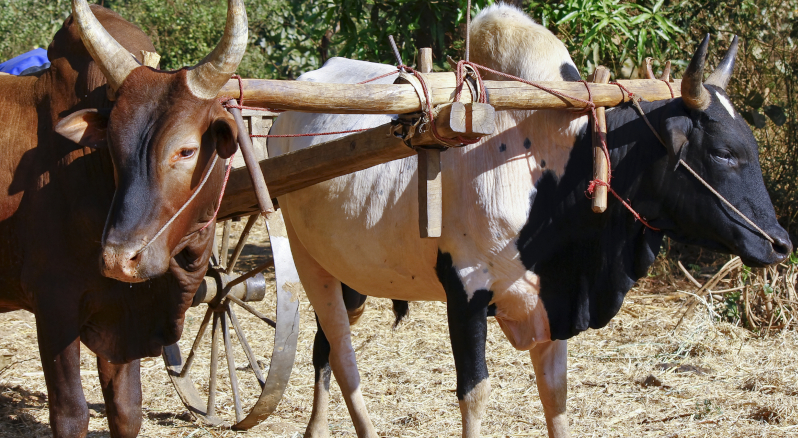Two Symbols of the Servant Leader
In the Diocese of Central Florida, we recently commended some new leaders to our deanery boards. And as we did this, we handed them two symbols: a cincture (for all the deans, purple because they operate on behalf of the diocese) and a gavel (for the president). Both of these things in some way symbolize an important part of what it means to be a Christian leader.
The Cincture
Any ordained person worth his or her salt should be able to tell you about the cincture. It is, in fact, meant to represent a yoke. And that’s why you will see many clergy, myself included, tie it in such a way that the knot is in the center. That way, you have a yoke with the pieces hanging down on the sides.
I’m not saying every church leader must tie the cincture that way. But I do want to stress that we have been invited as leaders to take on the yoke of Christ: “Take my yoke upon you, and learn from me” (Matt. 11:29a). What that means in essence is that when you want oxen to go in the same direction, such as to pull a plow, you yoke them side by side, and they sort of correct one another in a way. But there’s always, to use a different animal, a “lead dog” that in essence sets the pace for everybody else.
That’s Jesus’ understanding of what it means to be one who believes in him. We step into the place where he’s the one leading us, and we, in essence, get invited to be a part of what he is doing. In fact, I would say it is the nature of leadership to be yoked to Christ. To follow Jesus’ lead, and as a result, participate in what Jesus is doing and invite others to do the same.
So the question becomes for a leader, “What is Jesus doing?” not “What am I supposed to do?” If I’ve already said yes to Jesus Christ, my job is to follow his lead.
Mark 8:27-33 is a clear example of the fact that Peter was not following Jesus’ lead. Here, Jesus lays out for his disciples the path of not only what the next few weeks are going to be in the chronicle of Jesus’ life, death and resurrection, but also sets before them an example of what being a follower of Jesus is going to be like.
Somehow, when Jesus says, “The Son of Man is going to suffer and die,” I’m a little sympathetic to Peter’s rebuke. Because if I’m yoked to you, and where you’re heading is Golgotha, I don’t want to go there. And so it’s with tremendous sympathy, quite honestly, that I hear the Gospel story, not because I have this altruistic desire to protect Jesus from harm, but because I don’t want to get into harm’s way.
Following His Lead: Care for the Poor
You see, the other side of that very same coin has to do with the rebuke found in James 2:1-9 about calling people not to oppress the poor. And in fact, that God has a special role for the poor in the economy of the body of Christ. And that’s to teach us things that we would not know or learn from any other group of people.
I’m a witness to that. Part of me wondered, God, why did I have to go to Uganda? Specifically, I went to Northern Uganda, to sit with people who live in what were at the time called “displaced person camps,” because the whole of Northern Uganda had been completely marauded by a paramilitary occult organization called the Lord’s Resistance Army. You’ve probably heard about them because of the child soldiers. This group would, in essence, kidnap and recruit children and set them on the front line with guns as big as they were.
And yet what I discovered sitting with them in this place of horror was a level of serenity, a kind of godly grief that they bore as a call to intercession, and a deep commitment that they had made to, in essence, serve one another. They did this not just for the sake of Christian virtue, but an understanding of Christian virtue as an island of civilization in the midst of the horror that was their life.
I cannot tell you the contrast between this group of people in this rather dingy tent and this. In fact, the true rest in this tent city was almost more than you can imagine. It showed me something I probably never would have seen otherwise. And that’s this: If I continue to surround the circle of my fellowship, the circle of my teachers, with people who are a part of my group, I’m actually disobeying the very admonition given to us in the book of James. You see, in Christ, I’m invited into something that is larger than myself. I’m invited into a place to be a part of a group of people who are not in any way, a preferred group.
That’s the essence of what James is trying to speak against, much less entering into places that literally do the very thing the Scripture speaks against. Why is it, for example, that the Anglican Communion allows the people with the most money to set the theological agenda? That is in direct contradiction to the epistle of James’ admonition. Why is it that we, in the communities in which we live, allow a policy that should have died a long time ago called “redlining” that creates places for certain people to live and certain places for people not to live? Or why is it that we believe it is somehow the right thing to not call attention to the fact that some of the companies in which perhaps we might even own stock are participating in the kind of disastrous climate catastrophes that are literally causing sub-Sahara Africa to experience more of the desert?
Who gets hurt in that situation? The poor. I saw another example of it not too long ago when I was watching a show on PBS that talked about people who had been in the Marshall Islands. Our government used the Marshall Islands for nuclear testing, which basically obliterated some of the islands there, and so they were brought to the mainland United States. These people knew what was going on; they were actually happy for the trip. But now, there are immigration issues with them that are causing them to be sent back to islands that they have never known.
Doesn’t that sound like oppressing the poor to you? This “rich versus poor” contrast was not limited to the era in which James lived. If I’m a part of what Jesus is doing, and Jesus is very clear that he is inviting his disciples to follow his lead and to step into places that could, in fact, be extraordinarily costly and uncomfortable, and I’d rather hear the voice of Peter that says to Jesus, “Don’t do that,” I need to pay attention. You see, if I’m tied to Jesus’ yoke, I don’t have any option unless I want to disentangle myself from the obligation, and God help me if that’s the case.
The Gavel
The other piece that has been given to us as a symbol of leadership that we are sharing today might seem like the opposite of the cincture. And there are people that would like to use it that way, but it’s not.
A gavel has to do with good public leadership, still tied to the yoke of Christ. But leading in such a way, both by example, as well as organizing, talking about putting people in the right place, the supernatural gift of administration, thinking carefully about public presentations that, in fact, allow the most good to be accomplished is critical to the leadership of any church, any organization.
The last thing anyone should be doing is somehow thinking about that as a kind of lesser office. It’s just the opposite. The deanery is often where some of the real work gets done, undergirded, supported and led by men and women of prayer. It’s not an either/or.
And in fact, you could almost say the yoke and the gavel are two sides of leadership. That’s particularly true in our congregations and in our polity.
You see, when I say yes to Jesus, I get invited into what he is doing. That’s my calling. But Your calling is also to be a part of what Jesus is doing. It’s not, in the end, about self-fulfillment. It is about being invited into his life. And in so doing, I know joy. I know a kind of sense of making a difference for the sake of eternity that could never happen any other way.
But let’s be clear. The one who sets the agenda is Jesus himself. We are yoked to him. And therefore, if we’re going to say yes, we have to pay attention. And one of the ways that can happen is to think more carefully about both the yoke and the gavel.
Did you know the meanings behind the cincture and the gavel? Share this blog and your response on Twitter. Please include my username, @revgregbrewer.
(This post is an adaption of Bishop Brewer’s sermon on Feb. 20, 2020, at the Bishop’s Oratory of the Diocesan Office, Orlando).
Unless otherwise noted, Scripture quotations are from the New Revised Standard Version Bible, copyright © 1989 the Division of Christian Education of the National Council of the Churches of Christ in the United States of America. Used by permission. All rights reserved.

